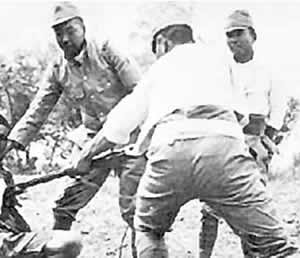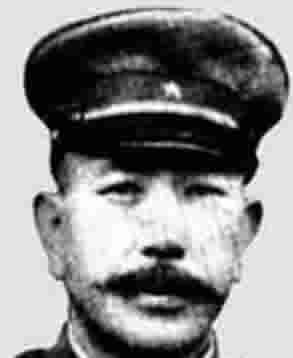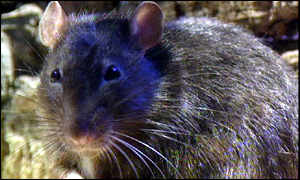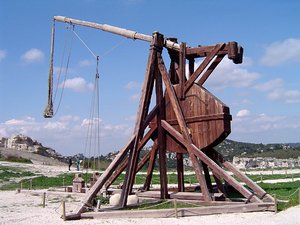Science of Conflict
Biological warfare
|
During the Sino-Japanese
War Japanese soldiers assigned to Unit 731 of the Imperial Japanese Army
Water Supply and Prophylaxis Administration one night infected 3,000 bread
rolls with typhoid, previously grown in a laboratory. The next morning these
bread rolls were fed to Chinese POWs. Within days many were writhing in
agony slowly dyeing from the disease. Japanese scientists moved amongst
the dyeing meticulously recording details.
These scientists were involved in a secret biological weapons program. |
|
Japanese occupation was often
very brutal with many Chinese civilians suffering at the hands of the
Japanese.
In charge of this top secret
biological weapons program was Dr Ishii Shiro, Japan's most prominent
bacteriologist. In 1932, when Japan invaded Manchuria, Shiro performed
many horrible experiments on the population in an effort to perfect an
efficient weapon of mass destruction. By 1940, Shiro had developed the
world's first biological weapon of mass destruction. |
|
| His weapon of mass destruction
was used against a Chinese village with 4,000 people. It consisted of bombs
packed with bubonic-plague infected fleas. The entire village was wiped
out. An attempt to counter the U.S. forces invading Okinawa with a similar
weapon failed when the ship carrying the pathogens was sunk by a U.S. submarine. |
|
A plan to drop
pathogens on Los Angeles by seaplanes launched from a giant submarine
was shelved by the Japanese General Staff. Shiro argued that this attack
was justified since the U.S. forces were using napalm
to incinerate Japanese soldiers dug in their trenches and deep fortifications. |
| Biological warfare is not a
recent phenomenon. Plague has a long history as a biological weapon. Historical
accounts from medieval Europe detail the use of infected animal carcasses,
such as cows or horses, and human carcasses, by Mongols, Turks and other
groups, to contaminate enemy water supplies. Plague victims were also reported
to have been tossed by catapult into enemy castles under siege.
|
|
| Bubonic plague becomes evident
three to seven days after the infection. Initial symptoms are chills, fever,
diarrhea, headaches, and the swelling of the infected lymph nodes, as the
bacteria replicate there. If left untreated there is a 75% mortality rate.
The effects of the bubonic plague are evident on the right.
|
|
Research the
symptoms, mode of infection and cure for the following biological warfare
agents.
Bubonic plague
Anthrax
How was biological warfare
conducted in the Medieval times?
Were any viral agents used as biological weapons?
Explain how a virus works? |
|
|




